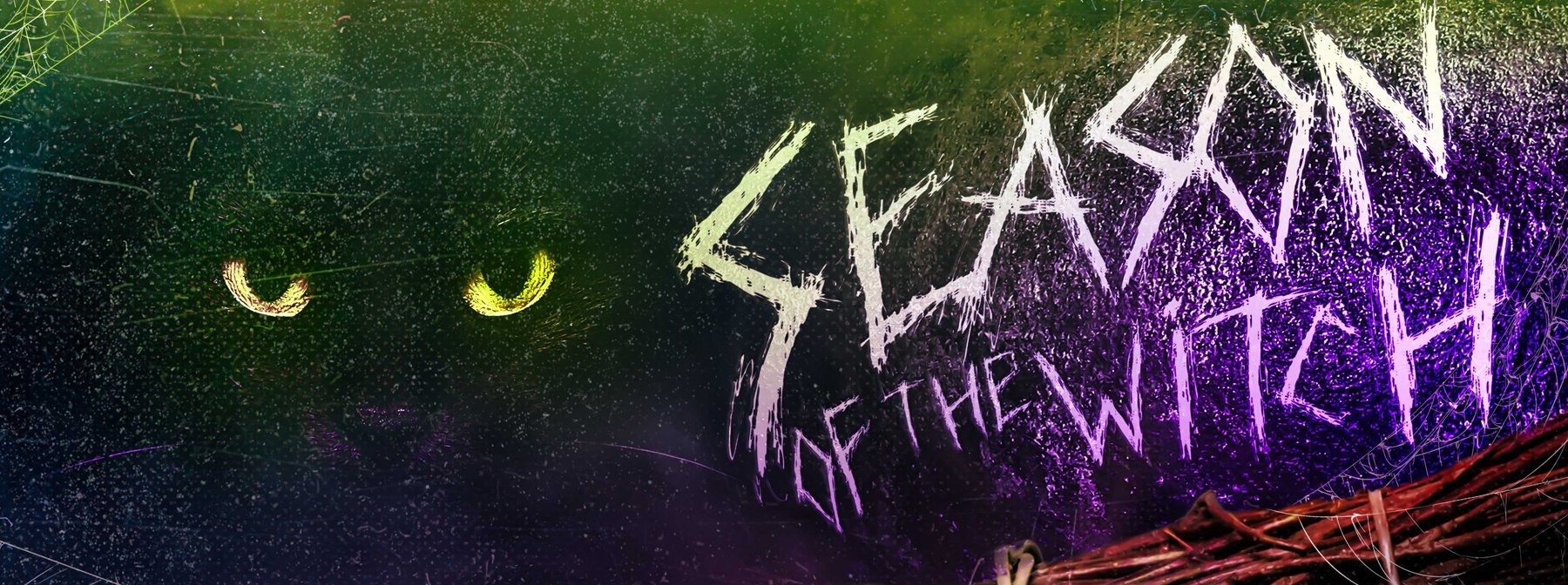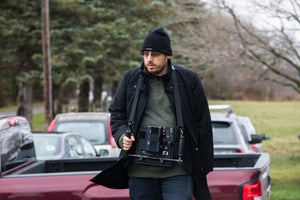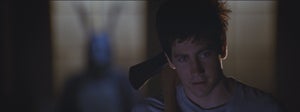
Sometimes admired, often maligned but always essential to the very DNA of genre cinema, the witch is one of the most prominent staples of horror iconography. Here are five picks from ARROW’s Season of the Witch collection that explore the world of witchcraft across different decades, countries and cultures.
Hagazussa (2017)
This slow-burn folk horror feels at times like The VVitch’s meaner, bleaker older sister (seriously, if you were disturbed by the fate of little Samuel in Robert Eggers’ New England folktale, turn back now.) Set against a breathtaking Alpine backdrop in 15th-century Austria, Lukas Feigelfeld's impressively bleak directorial debut explores witchhood as generational trauma through the story of Albrun (played with devastating vulnerablity by Aleksandra Cwen), a young goat herder who lives a life marked by loneliness, pariahdom and assault. With an atmopshere as thick as creeping fog and a hypnotic soundtrack from Greek drone artists MMMD, those who like their horror heavy and unsettling will fall effortlessly under Hagazussa’s spell.
https://www.youtube.com/watch?v=uHMtKR8svCg&pp=ygUXaGFnYXp1c3NhIHRyYWlsZXIgYXJyb3c%3D
The Snake Girl and the Silver Haired Witch (1968)
A gorgeously Gothic and gloriously melodramatic adaptation of the work of legendary mangaka Kazuo Umezu, The Snake Girl and the Silver Haired Witch is a family-friendly fairytale.
Living dolls, sinister serpents and plenty of tokusatsu tomfoolery bring to life the story of sweet little Sayuri who, upon reuniting with her parents after years in an orphanage, discovers a sinister and slippery family secret. Fittingly from the director who created legendary kaiju series Gamera, The Snake Girl and the Silver Haired Witch is entertaining and enjoyable for both adults and children alike, with a phantasmagorical and childlike sense of whimsy and a neat little moral to boot.
https://www.youtube.com/watch?v=MhfW_5dUqco&pp=ygUYc25ha2UgZ2lybCB0cmFpbGVyIGFycm93
Lux Æterna (2019)
Enfant terrible Gaspar Noé presents a modern-day take on the archaic practice of witch burning in Lux Æterna, shifting the setting from the medieval to a modern day film-set. Genre cinema legends Beatrice Dalle and Charlotte Gainsbourg (chosen, no doubt, for their filmography of complex, often violent female characters who would definitely not pass any witch-hunter’s test of moral purity) play themselves in the role of director and star respectively. A chaotic and agonizingly stressful shoot unravels in which the women on set are groped, grabbed, belittled and bound.
It’s not hard to view Lux Æterna as a direct product of the MeToo movement, painfully aware as we are that abuse on film sets is not only rampant but often an expected ‘means to an end’ for authenticity. In classic Noé fashion, the end result is an adrenaline shot of anxiety straight to the heart, climaxing in an aggressive assault on the senses reminding us that witch-burning never stopped being entertainment - it just happens in front of the camera now.
https://www.youtube.com/watch?v=f6z5u_YY-Ws&pp=ygURbHV4IGFldGVybmEgYXJyb3c%3D
Season of the Witch (1973)
The king of the zombies takes on a similarly iconic symbol of horror in Season of the Witch aka Hungry Wives! Influenced by the sweep of Second Wave feminism, in his self-described feminist film, Romero weaves a tale of witchcraft as liberation for suffocated housewife Joan Mitchell. With her teen daughter missing and her husband on one of his many business trips, the frustrated Joan finds solace and sisterhood in the practice of witchcraft, regaining a confidence stripped from her by a society that sees older women as subjects of derision and mockery.
A psychedelic examination of a particularly ‘70s brand of witchy faith and femininity, Season of the Witch is an underrated and underseen entry into Romero’s revolutionary filmography that remains – like most of his work – as politically relevant today as it did upon release.
https://www.youtube.com/watch?v=r3FT6xndS1Y&pp=ygUZc2Vhc29uIG9mIHRoZSB3aXRjaCBhcnJvdw%3D%3D
Mark of the Devil (1970)
Fondly remembered for an effective marketing campaign involving vomit bags and the oft-touted promise that it was ‘most horrifying film of all time’, Mark of the Devil is an unintentionally campy and intentionally exploitative tale that focuses not on the horror of witches, but of those that abused their false piety to rape, torture and kill innocent women.
Religious corruption runs rampant in 18th-century Austria, where young witch-hunter Count Christian Von Meruh (in one of German genre icon Udo Kier’s first major roles) finds himself disillusioned with his mission after falling for falsely-accused Vanessa (Olivera Katerina). His colleagues however - the vicious and sadistic Albino (an aggressively creepy Reggie Nalder) and superior Lord Cumberland (Herbert Lom) – are more keen to prove themselves as righteous men of God by pulling the tongues out of women’s heads.
Landing itself on the infamous ‘video nasties’ list and heavily cut for its original release, this unintentionally campy and intentionally exploitative takedown of institutional power abuse, and remains a brutal watch even for the most hardened gorehound.
https://www.youtube.com/watch?v=kPDoyqi4qm8&pp=ygUXbWFyayBvZiB0aGUgZGV2aWwgYXJyb3c%3D
All of these and more are available to watch in the Season of the Witch collection on ARROW.

Related Articles








